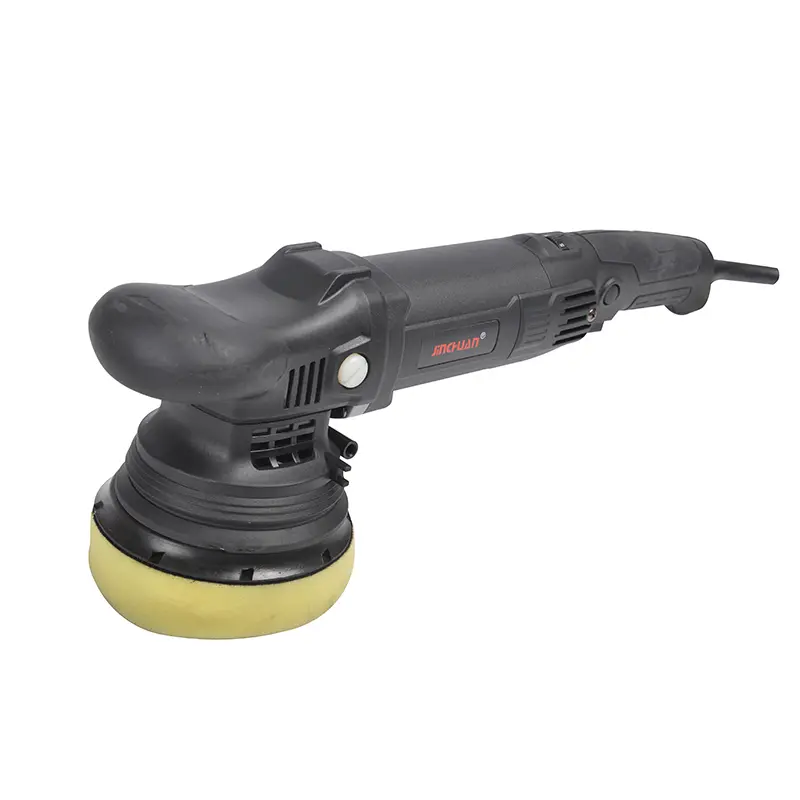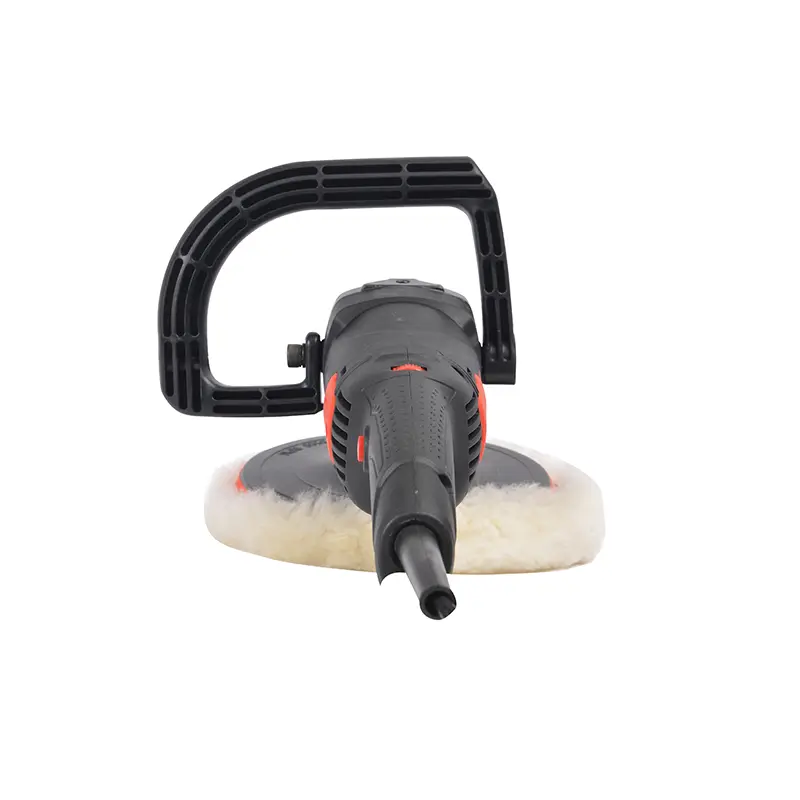The variable-speed polishing machine is a powerful tool, widely used in surface treatment of various materials such as metal, wood, stone and plastic. The correct use of variable-speed polishing machines not only enhances work efficiency and polishing quality, but also ensures operational safety and extends the service life of the equipment. The following is the correct usage method of the variable-speed polishing machine:
First, preparations before use
1.Read the instruction manual
Before using the variable-speed polishing machine, be sure to read the equipment’s user manual carefully. Understand each component of the equipment, the operation process, safety precautions and maintenance requirements. This can not only help you use the equipment correctly, but also avoid safety accidents caused by improper operation.
2. Check the status of the equipment
Before use, conduct a comprehensive inspection of the equipment
Check the wires and plugs: Make sure the wires are undamaged or cracked, and the plugs are not loose or damaged. If any problems are found, replace the wires or plugs in time to avoid electric shock accidents.
Check the polishing head and accessories: Inspect whether the polishing head (such as sandpaper, polishing pad, etc.) is firmly installed and whether the surface is flat. If wear or damage is found, replace it in time.
Check the operating status of the equipment: Start the equipment without touching the polishing head and check if it operates smoothly and if there are any abnormal noises or vibrations. If any abnormality is found, repair it in time.
3. Prepare the working area
Ensure that the working area is clean, tidy and free of debris. A messy work area may cause tripping or slipping, thus leading to accidents. In addition, cleaning the working area can prevent dust and debris from affecting the polishing effect.
4. Wear protective equipment
When using a variable-speed polishing machine, it is essential to wear appropriate protective equipment:
Goggles: Prevent flying particles from harming the eyes.
Gloves: Protect hands from scratches or burns.
Earplugs or earmuffs: Reduce noise damage to hearing.
Masks or dust masks: Prevent inhalation of dust and particles.
Second, operation steps
1. Select an appropriate polishing speed
One of the major advantages of the variable-speed polishing machine is that it can adjust the speed according to different materials and work requirements. A reasonable selection of speed can enhance the polishing effect and efficiency.
Rough polishing: For harder materials (such as metal, stone) or surfaces that require the removal of significant flaws, choose a lower speed (such as 1000-2000 RPM). A lower speed can provide greater torque, which helps to quickly remove defects on the material surface.
Fine polishing: For softer materials (such as wood, plastic) or those requiring a smooth surface, choose a higher speed (such as 3000-5000 RPM). A higher speed can make the contact between the polishing head and the material surface more uniform, thereby achieving a smoother surface.
2. Install the appropriate polishing accessories
Select the appropriate polishing accessories based on the object to be polished and the desired effect
Sandpaper: Used to remove blemishes, scratches or rust from the surface of materials. Choose sandpaper of different grit sizes as needed and polish gradually from coarse to fine.
Polishing pad: Used to achieve a smooth and glossy surface. Polishing pads are usually made of wool, sponge or microfiber materials and are suitable for a variety of materials such as metal, wood and plastic.
Polishing paste or liquid: Using polishing paste or liquid during the polishing process can enhance the polishing effect, reduce friction, and prevent the material surface from overheating.
3. Hold the device correctly
When operating a variable-speed polishing machine, the correct grip posture is of vital importance
Hold with both hands: Firmly grasp the handle of the device with both hands to ensure stable control. Avoid single-handed operation to prevent the equipment from getting out of control.
Maintain balance: Stand with your feet apart at shoulder width to keep your body balanced. Avoid leaning forward or backward too much to prevent losing balance.
Gentle force application: During the polishing process, avoid pressing the equipment too hard. Keep the polishing head in appropriate contact pressure with the material surface to ensure uniform polishing.
4. Move the device evenly
During the polishing process, keep the equipment moving evenly and avoid staying in a certain area for too long
Move along the grain direction: For textured materials such as wood, polishing should be carried out along the grain direction to avoid scratching the surface.
Spiral or circular movement: For materials without texture such as metal or stone, a spiral or circular movement path can be chosen to achieve a more uniform polishing effect.
Avoid repeated polishing: During the polishing process, pay close attention to the changes on the material surface and avoid re-polishing the already polished areas to prevent damage to the material surface.
5. Regularly check the polishing effect
During the polishing process, regularly inspect the polishing effect on the material surface to ensure that the expected quality standards are met
Check the surface flatness: Gently touch the material surface with your hand to check if there are any unpolished areas or residual defects.
Check the glossiness: Observe the glossiness of the material surface under natural light or artificial light to ensure the desired gloss effect is achieved.
Adjust polishing parameters: Based on the inspection results, promptly adjust the polishing speed, pressure or replace the polishing accessories to ensure the polishing effect.
Third, maintenance after use
1. Clean the equipment
After use, clean the dust and residues on the equipment in time
Clean the polishing head: Use a soft cloth or brush to remove dust and particles from the polishing head (such as sandpaper or polishing pad). If the polishing head is worn or damaged, replace it in time.
Clean the surface of the equipment: Wipe the outer shell of the equipment with a damp cloth to remove dust and stains. Be careful not to let water enter the interior of the equipment to avoid damaging the motor.
Clean the wires: Wipe the wires with a dry cloth to remove dust and stains and ensure the insulation performance of the wires.
2. Store equipment
Store the equipment in a dry and well-ventilated place, avoiding direct sunlight or damp environments.
Stable placement: Place the equipment on a stable ground, avoiding tilting or inverting to prevent damage to the internal components of the equipment.
Avoid high temperatures: Do not store the equipment in a high-temperature environment to prevent it from affecting the performance and lifespan of the equipment.
Regular maintenance: Regularly inspect the condition of the equipment, such as wires, motors, polishing heads, etc., and promptly carry out maintenance and upkeep to ensure that the equipment always remains in good working condition.
Fourth, Common Problems and Solutions
1.The polishing effect is uneven
The reason might be that the polishing speed is inappropriate, the force application is uneven, or the polishing path is incorrect
Solution: Adjust the polishing speed, ensure uniform force application, and adopt the correct polishing path. Regularly check the polishing effect on the material surface and adjust the polishing parameters in a timely manner.
2. The polishing head wears out too quickly
The reason might be that the polishing speed is too high, the force applied is excessive, or the polishing material is too hard.
Solution: Reduce the polishing speed, decrease the force applied, and select the appropriate polishing accessories. Replace the polishing head regularly to ensure the polishing effect.
3. The equipment is overheating
Cause: It might be due to long-term continuous use, poor ventilation or equipment failure.
Solution: Avoid using the equipment continuously for a long time and let it have appropriate rest. Ensure good ventilation in the working area, regularly inspect the condition of the equipment, and promptly repair or replace damaged parts.
The correct use of variable-speed polishing machines not only enhances work efficiency and polishing quality, but also ensures operational safety and extends the service life of the equipment. Before use, be sure to read the manual carefully, check the equipment status, prepare a clean and tidy working area, and wear appropriate protective equipment. During the operation, it is necessary to reasonably select the polishing speed and accessories, hold the equipment correctly, move it evenly, and regularly check the polishing effect. After use, clean the equipment in time and store it properly. By following these steps, you can fully leverage the advantages of the variable-speed polishing machine to achieve efficient, safe and high-quality polishing results.
It is hoped that the introduction in this article can help you use the variable-speed polishing machine better and enhance your work and creative experience.
Post time: Aug-11-2025


